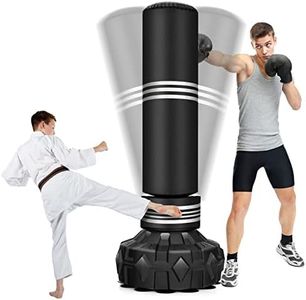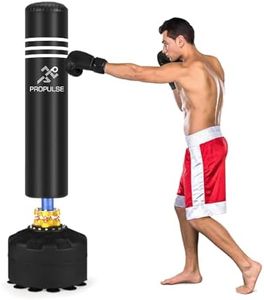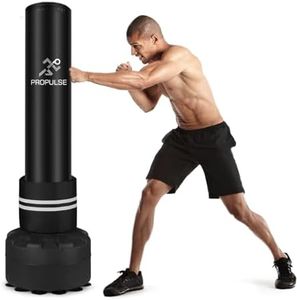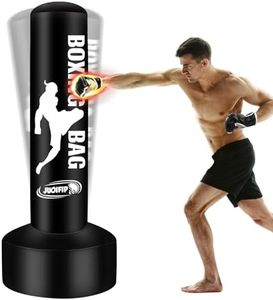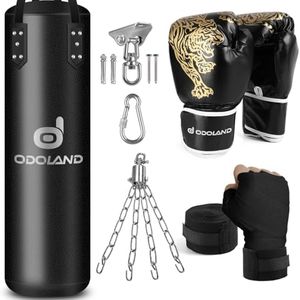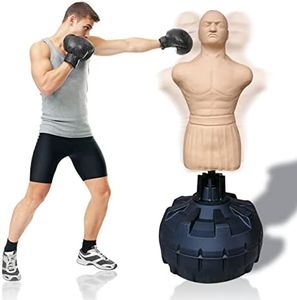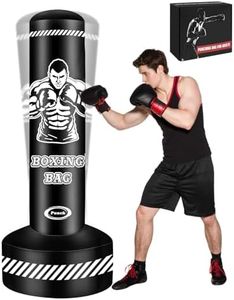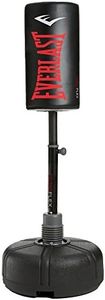We Use CookiesWe use cookies to enhance the security, performance,
functionality and for analytical and promotional activities. By continuing to browse this site you
are agreeing to our privacy policy
10 Best Heavy Bag
From leading brands and best sellers available on the web.Buying Guide for the Best Heavy Bag
Choosing the right heavy bag is all about matching your training goals, skill level, and available space to the right type of bag. Heavy bags are commonly used for boxing, kickboxing, and martial arts training, helping you build strength, technique, and endurance. It's important to consider not just the weight and material but also how you'll install it and what type of workouts you intend to do. Think about who will use the bag, how often, and where you plan to hang or stand it, as these factors can influence the best choice for you.WeightThe weight of a heavy bag is one of the most important factors to consider because it affects how much resistance and swing the bag will give as you hit it. Lighter bags (around 40-70 pounds) swing more easily and are better for beginners, cardio workouts, or younger users who may not have as much punching power. Medium-weight bags (70-100 pounds) are a good choice for most adults and those who want a balance of movement and resistance. Heavier bags (100 pounds and up) absorb more force and move less, which is ideal for powerful punchers or those wanting to work on strength and technique. Generally, the right weight depends on your body weight and intended use: if you’re heavier or hit hard, go for a heavier bag, but if you’re just starting or want speed and agility, a lighter bag may be better.
Filling MaterialHeavy bags can be filled with different materials like sand, cloth scraps, water, or even a combination. The filling affects the feel and firmness of the bag. Bags filled with cloth or fabric scraps tend to be softer and are easier on the hands and wrists, making them suitable for beginners or those who want a forgiving surface. Sand-filled bags are much firmer, offering a denser and heavier feel but can be hard on joints and may settle unevenly over time. Water-filled bags offer a unique cushioned feel and are often adjustable. Choose the filling based on your training comfort: softer filling for technique and longer workouts, firmer filling for power and conditioning.
Outer MaterialThe outer material of the bag determines its durability and how it feels to hit. Common materials are synthetic leather, genuine leather, vinyl, and canvas. Synthetic leather and vinyl are durable and easy to clean, suitable for home gyms, and often more affordable. Genuine leather offers a traditional, premium feel and can last a long time with proper care, but it is more expensive. Canvas bags are usually less expensive and more suited for lighter use. Think about how often you'll train and whether you'll wear gloves: frequent, heavy users may want to invest in stronger materials, while occasional users can go for simpler options.
Mounting TypeHeavy bags can be mounted by hanging from the ceiling, attaching to a wall bracket, or using a freestanding base. Hanging bags provide a more traditional experience and better swinging motion, which is useful for real fight simulation and working footwork, but they require sturdy installation and space. Wall-mounted bags are space-saving but more fixed and less mobile. Freestanding bags are easy to move and install, great for those who can't drill into ceilings or walls, though they might slide or tip over with heavy use. Choose based on your available space, need for portability, and whether you are able or willing to install heavy hardware.
Size and ShapeHeavy bags come in different lengths and shapes, affecting the type of training you can do. Standard bags (about 4 feet) are great for boxing and upper-body workouts. Longer bags (5-6 feet) or banana-shaped bags are suitable for kickboxing and MMA, as they allow for low kicks and knee strikes. There are also specialty shapes like teardrop or angled bags designed for uppercuts, hooks, and clinch training. If you want a general-purpose bag, standard cylindrical shapes are best, while specialized training (like kicking or clinching) may benefit from alternative shapes.
